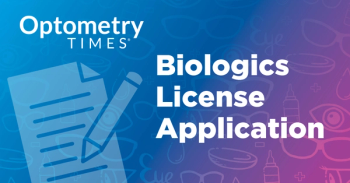
- July/August digital edition 2025
- Volume 17
- Issue 04
How much is enough? Seeking remission from type 2 diabetes
What we should be telling our patients about the remission of type 2 diabetes with weight loss.
A recent paper published in The Lancet caught my attention with the provocative title “Impact of bodyweight loss on type 2 diabetes remission: a systematic review and meta-regression analysis of randomised controlled trials.” The authors define “complete remission of diabetes” as a glycated hemoglobin level (HbA1c) less than6.0% and/or a fasting glucose level less than100 mg/dL with no use of glucose-lowering drugs at one year after weight loss. They define “partial remission” as HbA1cless than6.5% and/or fasting glucose less than126 mg/dL with no glucose-lowering drugs, again one year after initial weight loss.1
After evaluating 2847 eligible subjects in 22 randomized controlled trials for diabetes remission as a function of weight loss from baseline, the authors found that, on average across all trials, subjects with less than 10% of body weight loss achieved total remission (TR) and partial remission (PR) rates of 0.7% and 5.4%, respectively. For subjects with a 10% to 19% weight loss, PR rates were 48.4% (no studies analyzed considered TR for this range of weight loss). TR and PR rates were 49.6% and 69.3%, respectively, for a 20% to 29% weight loss and 79.1% and 81.5% for subjects losing more than 30% of their baseline body weight. Of note, every one percentage point decrease in body weight increased the probability of TR by 2.17% and the probability of PR by 2.74%; these effects were not impacted by age, gender, race, diabetes duration, baseline body mass index (BMI), HbA1c level, insulin use, or type of weight loss intervention (eg, pharmacotherapy, caloric restriction, bariatric surgery or a combination of interventions).The most interesting finding is the exponentially increased success of weight loss for purposes of diabetes remission with the degree of weight loss achieved, with a threshold weight loss greater than10% required for meaningful population levels of remission, signaling “a robust dose-response relationship between bodyweight loss and diabetes remission.”1
Remission of diabetes should be of considerable interest to all health care providers, including optometrists, because studies show that even brief periods of remission (ie, 6 months) significantly reduce the risk of vascular diabetes complications by 11% to 35%, including major adverse cardiovascular events (eg, stroke, heart attack, congestive heart failure and cardiovascular death) as well as incidence of diabetic retinopathy (DR) and nephropathy.2 Though some studies have shown that sudden reductions in mean blood glucose levels may exacerbate preexisting retinopathy (eg, with bariatric surgery, initiation of insulin therapy or potent glucagon-like peptide [GLP-1] receptor agonist drugs such as semaglutide),3 this phenomenon, sometimes referred to as diabetic reentry retinopathy or early worsening phenomenon, is typically short-lived, and the long-term benefits of primary DR prevention via diabetes remission will almost certainly yield a massive public health benefit if remission can be sustained.
All this begs the question: How realistic is achieving diabetes remission with currently available weight loss strategies? Specifically, can sufficient weight loss be achieved to induce meaningful population-level reductions in overweight and obesity and thus type 2 diabetes prevalence? Bariatric surgery results in a greater than 10% weight loss in virtually all patients, with mean body weight reductions of 15% to 30%, depending on baseline patient characteristics and the specific procedure chosen. However, it does carry surgical risk as well as increased risk of nutrient malabsorption.4Bariatric surgery is typically covered by insurance for type 2 diabetes only when the BMI is above 35 kg/m2.5 Nonetheless, roughly 60% to 70% of patients with obesity with type 2 diabetes mellitus (T2DM) experience remission after 5 years, including those with a BMI less than 35 kg/m2.6
GLP-1 or dual GLP/glucose-dependent insulinotropic polypeptide (GIP) therapies typically result in 5% to 10% reductions in body weight, depending on the specific drug, but a majority of patients regain weight after drug cessation.7 The most effective currently available medication is tirzepatide (marketed as Mounjaro for type 2 diabetes and as Zepbound for overweight/obesity; Eli Lilly). Three-year data from the SURMOUNT-1 trial (
GLP-1 therapy is relatively expensive and has been linked to both worsening DR (especially in patients using insulin) and increased risk of non-arteritic anterior ischemic optic neuropathy, particularly with large, rapid reductions in mean blood glucose10,11; GLP-1s also are associated with excess muscle loss (sarcopenia). One analysis found a 30% or more loss of muscle fiber volume with semaglutide.12 Recently, the SURMOUNT-3 MRI substudy found that tirzepatide did not cause excess sarcopenia compared with that seen with conventional weight loss strategies, such as diet, exercise, and/or bariatric procedures.13
What about fasting regimens? Meta-analysis comparing alternate daily fasting (ADF), 5:2 fasting (no food intake 2 days/week with a typical diet 5 days/week), caloric restriction (typically less than 750 kcal/day), and time-restricted eating (usually a “feeding window” of 8 hours) shows that each of these typically results in a 5% to 12% weight loss, with most data favoring ADF to achieve a more than 10% weight loss.14 A Chinese study of the 5:2 diet in T2DM showed superior reductions in weight loss (4 kg or 8.2 lb difference) and HbA1c level (- 0.3% to 0.4% difference) compared with metformin or empagliflozin over 16 weeks, but did not report on diabetes remission.15
Meaningful population-wide remission of type 2 diabetes appears to exponentially correlate with the degree of weight loss, with a 15% reduction in body weight required to achieve one-year partial or total remission rates approaching 50%. Various strategies are available to achieve this end, with bariatric surgery being most effective, followed by potent GLP-1/GIP therapy, followed by caloric restriction/intermittent fasting, based on my review of available evidence. Primary prevention with a focus on environmental contributors to diabetes16 (eg, food insecurity, taxation policies that discourage consumption of sugar-laden foodstuffs, particulate air pollution, neighborhood walkability, etc) is ideal, but awareness of and education about remission strategies to help patients currently living with type 2 diabetes are within our reach.
References:
Kanbour S, Ageeb RA, Malik RA, Abu-Raddad LJ. Impact of bodyweight loss on type 2 diabetes remission: a systematic review and meta-regression analysis of randomised controlled trials. Lancet Diabetes Endocrinol. 2025;13(4):294-306. doi:10.1016/S2213-8587(24)00346-2
Dambha-Miller H, Hounkpatin HO, Stuart B, Farmer A, Griffin S. Type 2 diabetes remission trajectories and variation in risk of diabetes complications: a population-based cohort study. PLoS One. 2023;18(8):e0290791. doi:10.1371/journal.pone.0290791
Bain SC, Klufas MA, Ho A, Matthews DR. Worsening of diabetic retinopathy with rapid improvement in systemic glucose control: a review. Diabetes Obes Metab. 2019;21(3):454-466. doi:10.1111/dom.13538
Lupoli R, Lembo E, Saldalamacchia G, Avola CK, Angrisani L, Capaldo B. Bariatric surgery and long-term nutritional issues. World J Diabetes. 2017;8(11):464-474. doi:10.4239/wjd.v8.i11.464
Eisenberg D, Shikora SA, Aarts E, et al. 2022 American Society of Metabolic and Bariatric Surgery (ASMBS) and International Federation for the Surgery of Obesity and Metabolic Disorders (IFSO) indications for metabolic and bariatric surgery. Obes Surg. 2023;33(1):3-14. doi:10.1016/j.soard.2022.08.013
Zhou X, Zeng C. Diabetes remission of bariatric surgery and nonsurgical treatments in type 2 diabetes patients who failure to meet the criteria for surgery: a systematic review and meta-analysis. BMC Endocr Disord. 2023;23(1):46. doi:10.1186/s12902-023-01283-9
Wilding JPH, Batterham RL, Davies M, et al; STEP 1 Study Group. Weight regain and cardiometabolic effects after withdrawal of semaglutide: the STEP 1 trial extension. Diabetes Obes Metab. 2022;24(8):1553-1564. doi:10.1111/dom.14725
Jastreboff AM, le Roux CW, Stefanski A, et al;
SURMOUNT-1 Investigators . Tirzepatide for obesity treatment and diabetes prevention. N Engl J Med. 2025;392(10):958-971. doi:10.1056/NEJMoa2410819Fujihara K, Matsubayashi Y, Kitazawa M, et al. Achieving normoglycaemia with tirzepatide: post hoc exploratory analysis of the SURPASS J-mono and J-combo studies. Diabetes Obes Metab. 2024;26(11):5304-5311. doi:10.1111/dom.15887
Vilsbøll T, Bain SC, Leiter LA, et al. Semaglutide, reduction in glycated haemoglobin and the risk of diabetic retinopathy. Diabetes Obes Metab. 2018;20(4):889-897.doi:10.1111/dom.13172
Amini A, Hamann S, Larsen M. Semaglutide and non-arteritic anterior ischaemic optic neuropathy: review and interpretation of reported association. Acta Ophthalmol. Published online March 8, 2025. doi:10.1111/aos.17473
Neeland IJ, Linge J, Birkenfeld AL. Changes in lean body mass with glucagon-like peptide-1-based therapies and mitigation strategies. Diabetes Obes Metab. 2024;26(suppl 4):16-27. doi:10.1111/dom.15728
Sattar N, Neeland IJ, Dahlqvist Leinhard O, et al. Tirzepatide and muscle composition changes in people with type 2 diabetes (SURPASS-3 MRI): a post-hoc analysis of a randomised, open-label, parallel-group, phase 3 trial. Lancet Diabetes Endocrinol. 2025;13(6):482-493. doi:10.1016/S2213-8587(25)00027-0
Elortegui Pascual P, Rolands MR, Eldridge AL, et al. A meta-analysis comparing the effectiveness of alternate day fasting, the 5:2 diet, and time-restricted eating for weight loss. Obesity (Silver Spring). 2023;31(suppl 1):9-21. doi:10.1002/oby.23568
Guo L, Xi Y, Jin W, et al. A 5:2 intermittent fasting meal replacement diet and glycemic control for adults with diabetes: the EARLY randomized clinical trial. JAMA Netw Open. 2024;7(6):e2416786. doi:10.1001/jamanetworkopen.2024.16786
Chous AP. 5 diabetes truisms that are (at least partially) false. Optometry Times. March 25, 2022. Accessed May 20, 2025. https://www.optometrytimes.com/view/5-diabetes-truisms-that-are-at-least-partially-false
Articles in this issue
4 months ago
Myopia is an escalating global health crisis4 months ago
Inside genetics and glaucoma5 months ago
Embracing dry eyeNewsletter
Want more insights like this? Subscribe to Optometry Times and get clinical pearls and practice tips delivered straight to your inbox.










































